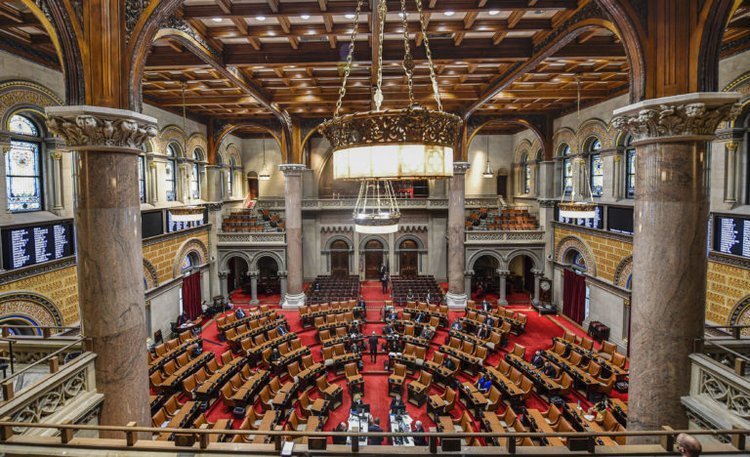Organizers call for public input as redistricting falls to lawmakers
/With the NYIRC’s failure to present maps successfully, the job is headed to the state legislature and Queens advocates are urging unified neighborhoods and dedicated public input. AP file photo by Hans Pennink
By Rachel Vick
More than 100 community leaders and organizations from South East Queens signed on to a letter urging Senate Majority Leader Andrea Stewart-Cousins and Assembly Speaker Carl Heastie to keep Richmond Hill and South Ozone Park united in the final redistricting map.
With the New York State Independent Redistricting Commission’s failure to provide a final electoral map to the state legislature this week, the responsibility for redrawing the lines for congressional, Assembly and State Senate districts now falls on the lawmakers.
Signatories of the letter say the historic division of the area — split into seven Assembly districts — contributes to lack of representation and that they have discouraged many residents from participating in politics.
“The gerrymandering and political disenfranchisement have split families, neighbors, congregations, small local businesses, school districts and more,” they wrote. “Over the past year, we have organized our families, friends and neighbors to become engaged in redistricting and make their voices heard.”
“The demand from these culturally and ethnically diverse communities of interest has been unanimous: residents want their neighborhood drawn into one Assembly district,” they continued.
Heastie and Stewart-Cousins issued a joint statement earlier in the week committing to the district drawing process and expect to be voting on another set of maps by the end of next week.
The power to keep the portion of Southeast Queens whole now rests in the hands of legislators, who can draw lines at will as long as they adhere to the rules for even distribution of the population.
The hope that the lawmakers will listen to the community’s request, however, does not erase the worry and uncertainty some organizers feel ahead of the last stages of the process – the legislature, unlike the NYIRC will not hold public hearings on the maps.
Aminta Kilawan-Narine — a community organizer, attorney, and the executive director and founder of South Queens Women's March — brought a decade of advocacy experience to the fight for redistricting, specifically in Richmond Hill and the surrounding area.
She told the Eagle that despite her confidence in the NYIRC’s response to community feedback, it does not negate feeling “anxious that the fate of the redrawing now rests at the hands of our legislators.”
“Yet I am hopeful that, in the name of justice and equity, values that so many of our South Queens legislators uplift, that they will advocate for the right thing, and that we will see lines that make logical sense,” she said. “It's not about special treatment, it's about equal treatment."
Though the focus areas of the Central Queens Redistricting Coalition differ from their neighboring organizers, Heather E. Beers-Dimitriadis, a co-chairperson of the coalition, said the motivation to unify their respective communities are one and the same.
She echoed Kilawan-Narine’s cautious optimism around the use of the extensive community input, and mourned the potential for hours of hard work to go to waste.
“We just hope that at the end of the day the lines create these nice, succinct, clean districts that are just more compact than what we've had in the past — our goal has been to keep communities of integers whole; that the disempowered are kept whole,” she said. “We've got to find a way to do better by the people we’re trying to engage in the process because they're going above and beyond, picking [commission members] committed to doing the work and not [divided by] politics.”
For now though, organizers, residents and political hopefuls will have to wait and see.
“Those of us who are organizers like to see transparency, to see and understand the process and see the timeline,” Beers-Dimitriadis said. “It isn't optimal; we're just sitting here waiting at this point to see what we can learn as far as what these lines are going to look like.”




